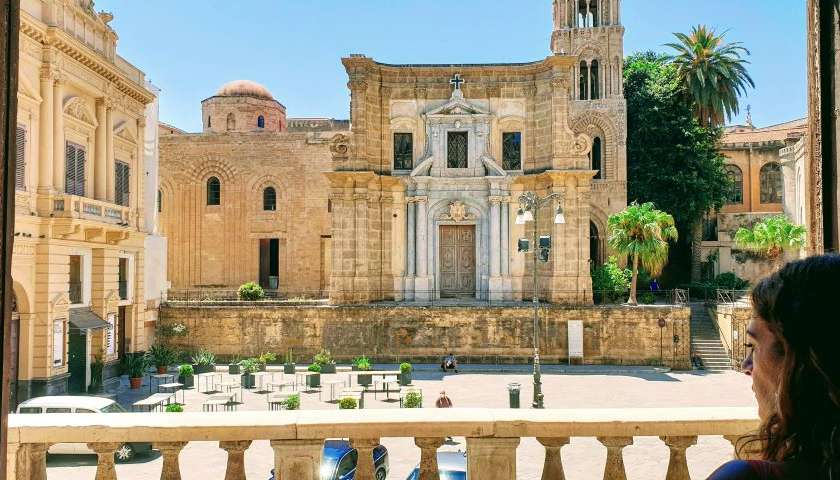Surrounded by the mounts of the Conca d’Oro and dipped into the sea, Palermo is one of the most interesting cities in Italy for art, history and tradition. Result of several colonization, from the Phoenician to the Romans, Arabs, Normans, Spanish, preserves a huge variety of monuments and signs of a mélange that point out its kaleidoscopic nature. Whether you're a first time or repeat visitor, the historical capital of sun-soaked Sicily never ceases to inspire and captivate; this is why you need our essential Palermo travel guide before you go. On this ultimate Palermo travel guide, you'll find insider tourist information and tips for visiting this marvelous city in Sicily.
Palermo Italy: where is it?
Palermo is the regional capital of Sicily, the biggest island not only in Italy but also in the whole Mediterranean Sea. Although Palermo is Sicily’s main city, is not easy to reach when coming from the mainland. The city is connected with the rest of the country by ferries, however it is quite a long trip. The best way to reach the city is by plane: the Falcone-Borsellino International Airport in Punta Raisi is well connected with major Italian and European cities.
Why Go?
A necessary part of the Italy's “Grand Tour” undertaken in the 18C and 19C by writers, poets and artists, attracted by the city’s oriental atmosphere and its eclectic and varied sights, Palermo has managed to preserve the fascination of the peoples who lived here and left their imprint on the city’s art and life. But, in the end, what makes Palermo so special are its people. Their welcoming hospitality combined with their food culture is something rare and to be enjoyed at least once in a lifetime.
Sights in Palermo Italy
Founded in 743 BC, Palermo is one of the oldest cities in Italy and among the first in the world to experience a modern form of civilization. Its strategic position in the middle of the Mediterranean brought invasions and dominations, all of them left an incredible artistic and cultural heritage. Every era of Palermo's complex history has been stamped into the stone, making the city a palimpsest of Arabic, Norman, and Baroque architecture.
Top Things to Do and See in Palermo
Fascinating central markets, historic monuments and dramatic Moorish architecture make Palermo an exciting holiday destination. Lively, colorful, and spicy, Palermo is an assault on the senses, so it can be difficult for a visitor to figure out where to start. The following list of top things to do in Palermo offers a sensual sample of the city's best markets, landmarks, and events for the first time or returning traveler.
Palazzo dei Normanni - Palace of the Normans
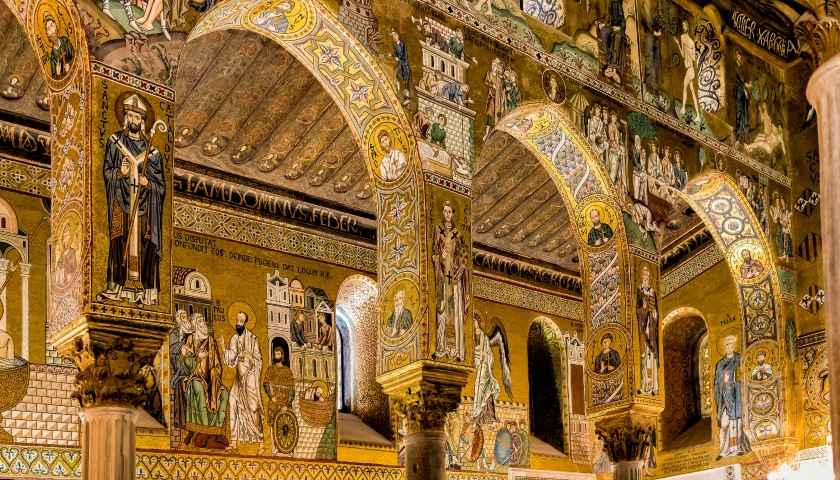
One of Italy’s most notable example of Norman architectures, the Palace was the seat of the Kings of Sicily during the Norman domination. Among its masterpieces, there is the Cappella Palatina a gorgeous, gleaming example of some of the world's most beautiful Byzantine mosaics.
San Giovanni degli Eremiti
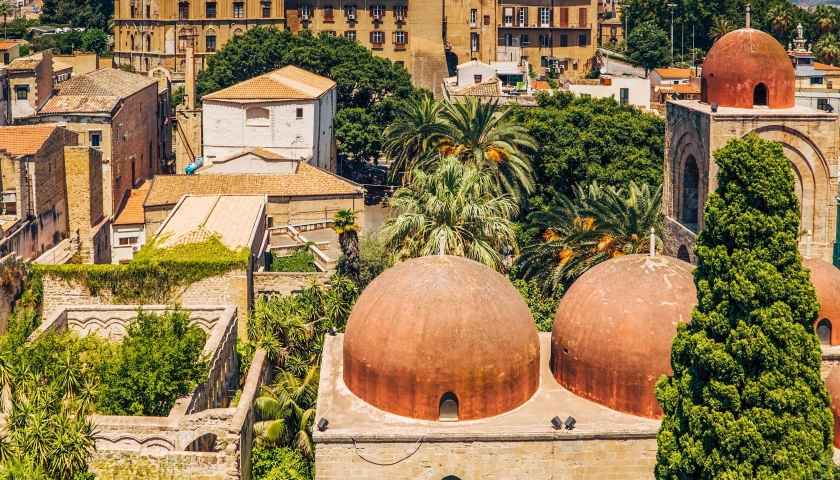
A symbol of the city of Palermo, this red-domed building near the Palazzo dei Normanni is reminiscent of the Hagia Sophia in Istanbul. Though its name derives from the time it was a Benedictine abbey, Byzantine, Arab, and Norman influences make the church of San Giovanni degli Eremiti an ideal spot for examining the architectural intersection of the many cultures that influenced the look of Palermo.
Palermo Cathedral
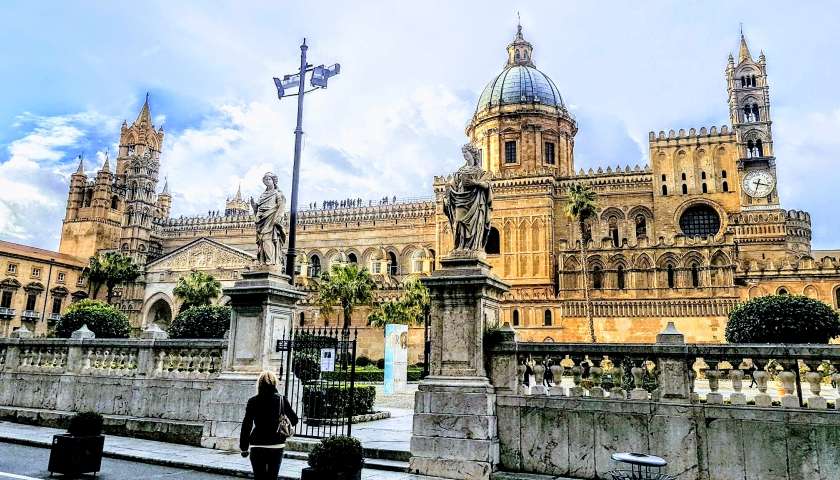
Blocks from the Palazzo dei Normanni off of Corso Vittorio Emanuele, Palermo's main drag, the Palermo Cathedral is a building of colossal proportions and varying architectural styles. Marvel at its Moorish, Gothic, and neoclassical exterior, then head inside to view Norman tombs, Greek and Roman sarcophagi, and the jewel-encrusted crown of Catherine of Aragon.
Santa Maria dello Spasimo
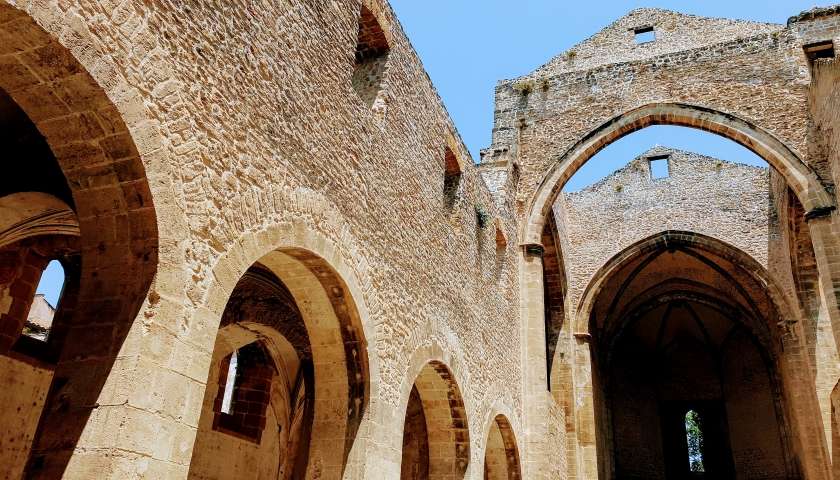
Built from 1506 onwards, the church of Santa Maria dello Spasimo and the adjacent convent were used as a fortress, theatre, lazaretto (hospital for the diseased, especially lepers), poorhouse and, until 1986, as a general hospital. After a period of dereliction, restoration has allowed the complex to be converted into a space for cultural events of various kinds.
Teatro Massimo, Palermo's Opera House
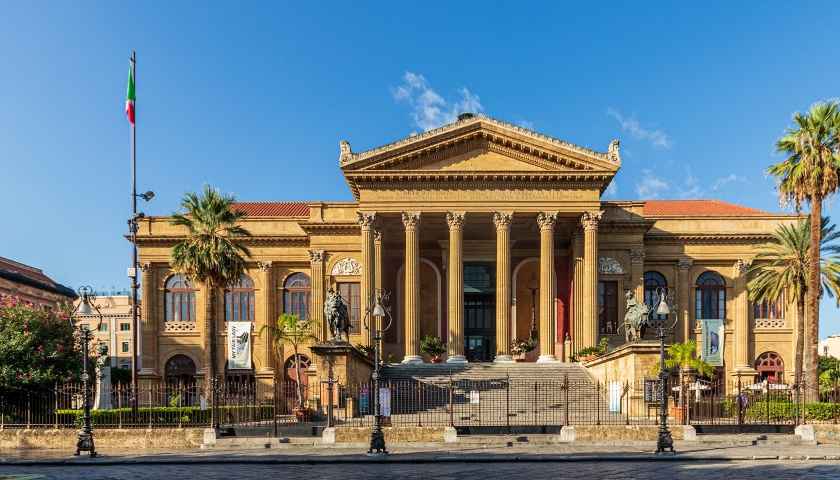
If you're after a full sensory experience in a spectacular historic building, visit the 1897 Teatro Massimo, Italy's largest theater, for an operatic performance of Verdi or Puccini. The atmosphere, with its color scheme of sumptuous gold and red, is surpassed only by its sight lines and acoustics, to this day considered among the best in all of Europe. You can book and purchase your tickets online at the Teatro Massimo official website.
Vucciria Market

Another kind of sensory overload can be had at the 700-year-old Vucciria Market, which fills the side streets of Piazza San Domenico every day but Sunday. Here, locals can be seen haggling with vendors over every imaginable kind of produce: cuts of meat, fish, giant piles of fruits, vegetables, and herbs. It's not a relaxing place to wander (in Italian, vucciria means "clamor" or "hubbub," which is right on the money), but it's unforgettable.
Kalsa Quarter
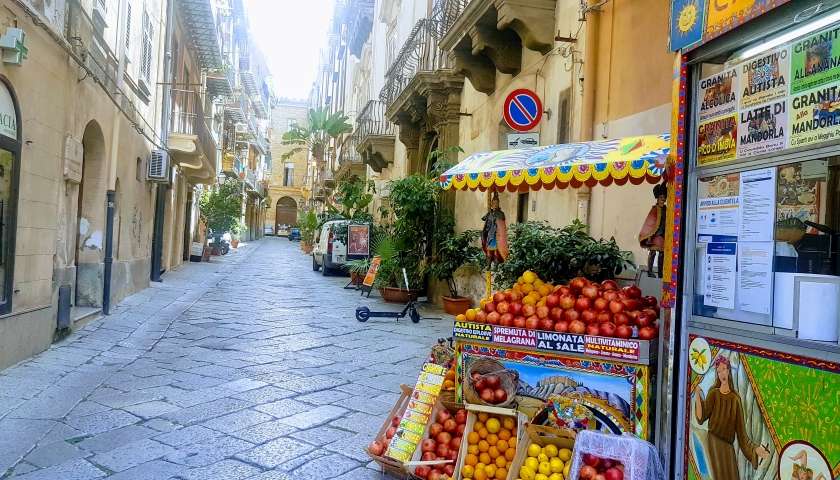
Constructed in the last century, Kalsa can be defined as a city within a city. Often overlooked by visitors, the district is an authentic hidden gem built upon medieval history by Arab domination. The Arabic flair of the district blends with its most famous buildings, all of them built in the Italian style: the oratories of San Domenico and Santa Cita, built in the Rococo style; Palazzo Mirto, a wonderful example of 17th century architecture; and the sumptuous Palazzo Abatellis, hosting masterpieces by Antonello da Messina.
Catacombe dei Cappuccini - Catacombs in Palermo
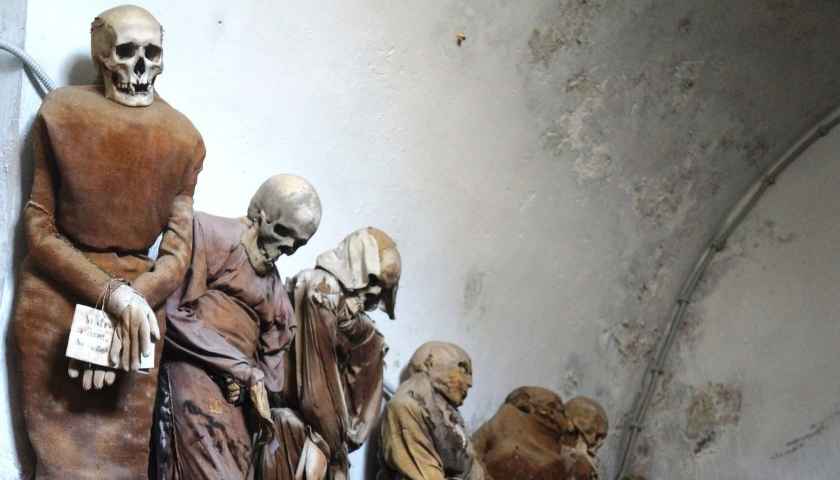
Of all the places in Italy to see mummies and skeletons, Palermo's Catacombe dei Cappuccini is one of the creepiest. About 8000 mummified remains of Capuchin friars and Sicilians of all classes were buried here from the 16th century until as late as 1920s. Many in good shape that still look lifelike; some even have hair and clothes remaining. This bizarre and haunting exhibit displayed in a gloomy labyrinth of corridors is not for the faint of heart, for the squeamish or for children.
Stroll Around Quattro Canti and Piazza Pretoria
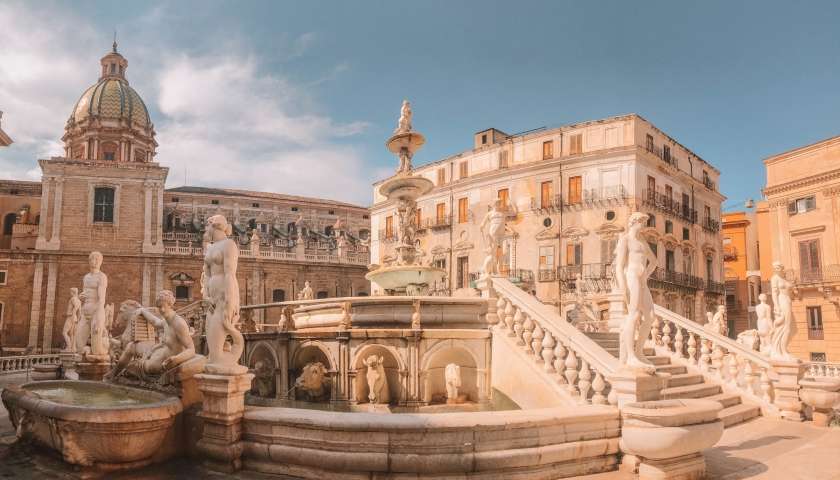
The Quattro Canti, the nexus of old Palermo known as "il teatro" (the city theater) is ideal for people watching and gentle strolls, especially so you can check out the scandalous statues that inhabit the main square of Piazza Pretoria. Once called the "Piazza Vergogna," or "Square of Shame," the Piazza Pretoria features a Mannerist fountain replete with nude marbles of river gods, tritons, and nymphs.
The Cathedral at Monreale
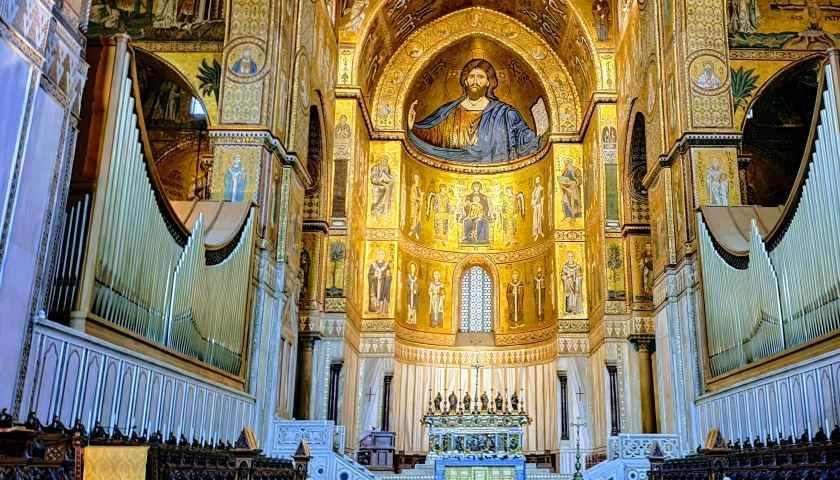
In the enchanting hill town of Monreale a short car ride from Palermo, you will find the splendid Santa Maria la Nuova Cathedral. Listed on UNESCO’s list of World Heritage Sites the Duomo di Monreale presents the most extensive mosaic decor in Italy, surpassing even Venice's San Mark Basilica. The cathedral also houses an extraordinary cloister, a masterpiece of stylistic synthesis of the western tradition and Islamic decoration.
Beaches Near Palermo
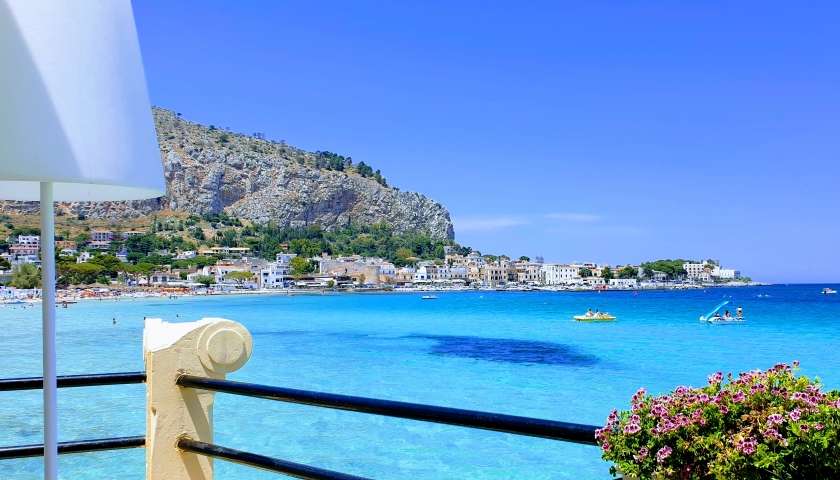
The island capital sits on the north shore of Sicily, within a short drive of several fabulous beaches. Within Palermo, among residential buildings, is the beautiful beach of Mondello, which is also where the annual beach festival is held in May. West of the city are the beaches of San Vito lo Capo and Isola delle Femmine. East of Palermo are a slew of resorts and public beaches on the way to Cefalù.
Handicrafts Festivals
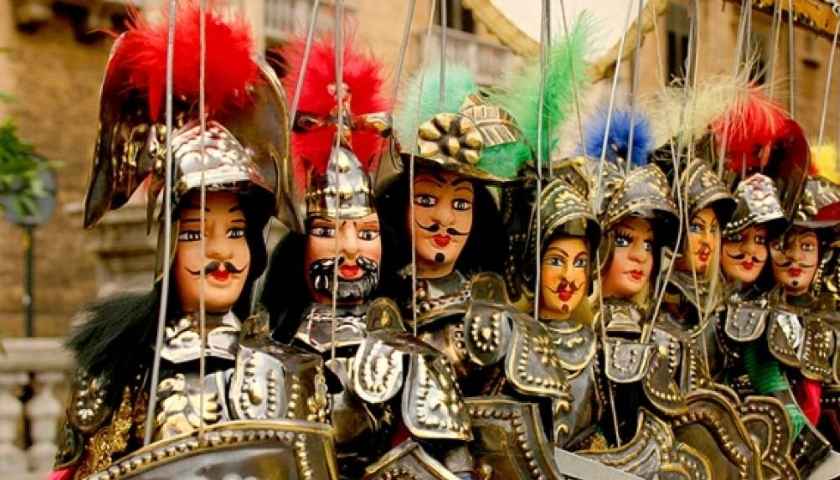
In May 2001, UNESCO has proclaimed the Sicilian puppet theatre a masterpiece of the oral and intangible heritage of humanity. The most classic and codified forms of the puppet theatre date from the mid-19C, when stories of bandits and saints, Shakespearian dramas and the popular tales of the paladins of France were staged. The richest puppet collections can be admired at the International Museum of Marionettes Antonio Pasqualino, featuring more than 3,000 pieces of puppetry.
Saints Day Festivals
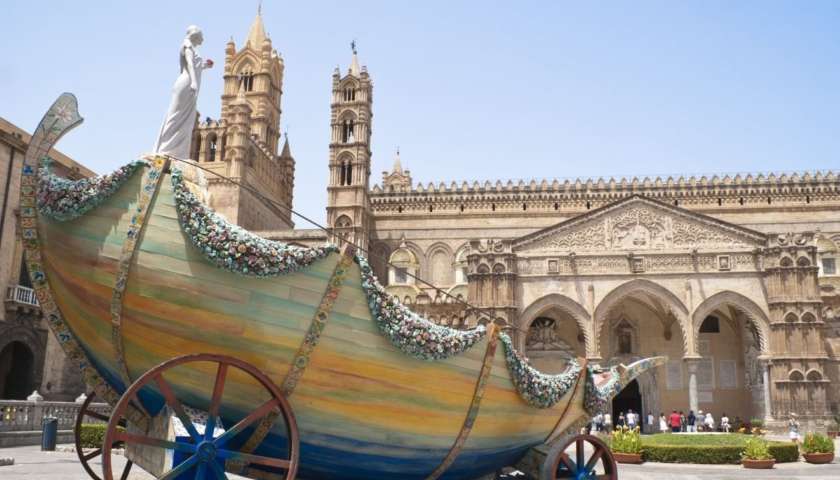
Feast days are a great time to see traditional Palermo at its best. The city lives it up during festivals for its patron saints, including San Giuseppe (March 19), Madonna della Catena (mid-August), and San Nicola (December 6-8). Palermo's main patron saint – Santa Rosalia, – has been celebrated in this city with music, parades, and much feasting, for more than 400 years. The Festa di Santa Rosalia, known locally as La Santuzza is held each year on July 15.
In the early 17th century, Rosalia saved the city from the plague after a number of her relics were discovered in Monte Pellegrino. The celebration reaches its peak on the 14th when thousands of people travel from around Palermo and the whole of Sicily to follow the procession led by a giant iron chariot carrying the statue of the patron saint.
The parade begins at the Palermo Cathedral and travels over one mile to the Foro Italico, the gorgeous seafront. Fireworks fill the night sky with colorful light. Restaurants celebrate the festival with traditional dishes serving local delicacies, such as:
La pasta chi sardi – pasta with sardines
Babbaluci – boiled snails with garlic and parsley
‘u purpu – boiled octopus
detto ‘u muluni – watermelon
A hunter found the relics of Saint Rosalia after a having a dream about the cave in which her remains lay. The hunter walked the saint’s remains around the historic city center three times before the plague was eradicated in Palermo. The cave on Monte Pellegrino is now a chapel dedicated to the saint who died in the 12th century. If traveling through Sicily between the 14th and 15th of July, plan accordingly with pre-booked transfers and accommodations. Account for delays due to traffic inside the center of Palermo whether traveling in or out of the city.
Sicily Top Attractions to See from Palermo
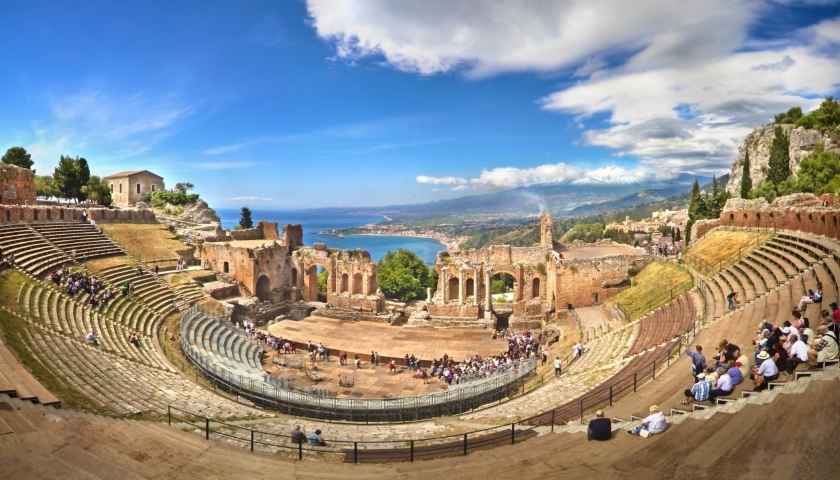
Sicily, already famous for its splendid landascape and climate, its artistic and architectural heritage and its vibrant culture has today several Unesco World Heritage Sites as well as many Natural Reserves, in addition to its islands. Recommended sites to visit from Palermo:
- Cefalù 70 km
- Zingaro Reserve 100 km
- Erice 115 km
- Agrigento 130 km
- Catania 200 km
- Etna active volcano 220 km
- Siracusa 260 km
- Taormina 260 km
- Ustica Island Marine Reserve 1-hour by hydrofoil
- Eolian Islands 2.30-hour by hydrofoil
Sicilian’s Cuisine

Sicilian cuisine finds its roots in centuries of invasions by Mediterranean populations, and Palermo makes no exception in offering a large selection of dishes. Greek, Arab, Spanish, Norman and other Mediterranean roots can be discovered in ingredients such as capers, almonds, olives, citrus, oregano, hard durum wheat, wild fennel and sea salt.
Palermitan Street Food
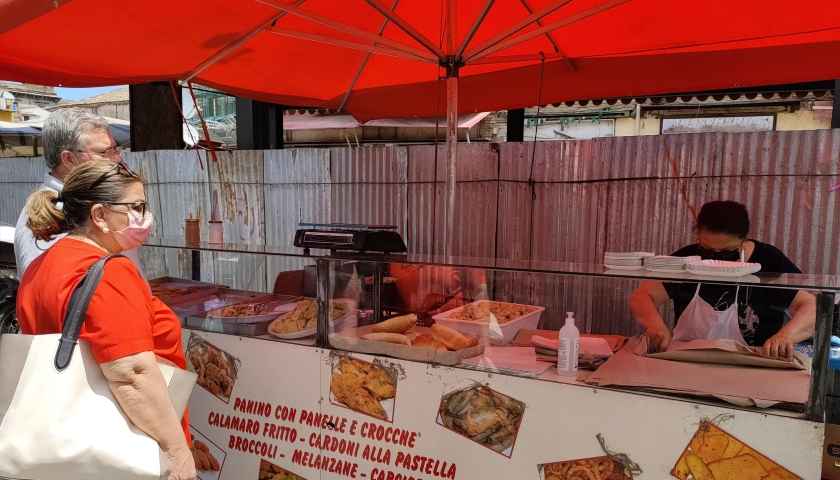
In addition to the “court” cuisine there is the popular fare that may be described as “Palermitan street food” or “fast food”; this is available from fried-food shops, bakeries and stalls serving tasty dishes that you can eat while strolling in the street. A street food tour in Palermo is a must and tasty way to cross a couple of millennia of history, art, aromas, flavors, and different civilizations.
Food in Palermo Italy
Palermo offers a wide array of foodie delicacies beyond the usual Italian pizza and pasta fare – be brave and dive in. Consider trying at least one of these specialties. Buon appetito!
arancine di riso: deep fried rice balls filled with meat sauce or ham and cheese
babbaluci: small marinated snails
crocchè: fried potato croquettes
panelle: pancakes of chick-pea flour served on their own or with bread
caponata: a mixture of fried vegetables in a sweet-and-sour sauce
cardoni: stalks of fried artichoke
sarde a beccafico: sardines stuffed with bread crumbs, raisins and pine nuts
sfincione: a kind of pizza topped with tomato, caciocavallo cheese, anchovies, onions and herbs
panino con la milza: the spleen (fried) may beschietta or maritata (“single” or “married”) – that is, served with just lemon or with ricotta and caciocavallo
Best Hotels in Palermo, Sicily
Attracting visitors through a combination of rich history, Unesco-listed sites dripping with ancient architecture and a movie-worthy coastline, this beautiful city is home to some quality accommodation. Consider these top hotels for your next trip to Palermo. These luxury and boutique hotels, apart from the Rocco Forte Villa Igiea, are in or very near the historic center of Palermo, where you'll find most of the city's top attractions.
Information may have changed since date of publication. Please confirm details with individual establishments before planning your trip.
Rocco Forte Villa Igiea
With its waterfront location on the bay of Palermo, The Rocco Forte Villa Igiea brings you a luxury 5-star hotel experience in a sumptuous villa. The villa, restored by renowned Art Nouveau architect Ernesto Basile at the end of the 19th century for the aristocratic Florio family, still has its original frescoes, decoration and furniture. The food is nothing less than top-notch. Mediterranean specialties are available for lunch and dinner in the Florio restaurant overlooking the bay. Exceptional settings, a dedicated passion for detail are just some of the values that make Villa Igiea so unique. Book your stay.
Grand Hotel Et Des Palmes
Created in 1874 from the old mansion of the aristocratic Ingham- Withaker family, the 5-star Grand Hotel et Des Palmes has two exquisite restaurants and a bar/lounge. A favourite place of Richard Wagner, who found here the inspiration to complete his Parsifal, this luxurious hotel welcomes its own guests into all the charm and fascination of a great epoch. Book your stay.
Grand Hotel Wagner
Grand Hotel Wagner is a 5-star hotel housed in a neoclassical palace on the street where the composer Richard Wagner lived for a couple of years. It’s well located and a close walk to places like the Politeama Theater and Via Liberta. The 61 rooms are decoreted with frescoes, marble, and art works. NB: The chandelier in the lobby was used in the ballroom scene in the Sicilian cinematic classic, The Leopard. Book your stay.
Quintocanto Hotel and Spa
Quintocanto is a 4-star hotel near the Quattro Canti Square and the Cathedral of Palermo, about one kilometer from the train station. There are 21 rooms and suites with modern furniture, internet, and views. Specially equipped rooms for disabled are available and the hotel accepts pets. The hotel has a restaurant and bar, wellness center and spa, and Turkish bath. Book your stay.
Hotel Ambasciatori
Hotel Ambasciatori is a 4-star hotel in the historic center on Via Roma, Palermo's main street, 300 meters from the railway station. The small hotel has 16 single, double, triple, and quadruple rooms. Rooms have air-conditioning and some rooms have a city or sea view. Book your stay.
Looking for inspiration?
Nancy Aiello Tours has local expertise and industry insights to help you navigate the finest experiences in Palermo. We offer a range of exclusive water sport and leisure activities, including a private family-friendly cruise along the Palermo coastline, a romantic sunset champagne cruise, and private guided tours of Palermo’s ancient markets and hidden architectural treasures.
Plan Your Trip to Palermo
Palermo is a popular Italy travel destination with centuries of history and tradition, beautiful architecture, stunning beaches and mouthwatering cuisine. Get inspired with this Best of Sicily in 10 Days Tour from Palermo to Taormina and Siracusa. Then, your advisor will help transform your dream trip into a reality. Ready to begin? Fill out our quick Trip Form for a bespoke Sicilian experience.
Stay up to date with travel tips & local insights and follow our adventures in Italy on Facebook and Instagram – we share travel inspiration, news, and insights that will brighten your day and whet your appetite for that next travel adventure!
 Rome & Vatican
Rome & Vatican Venice
Venice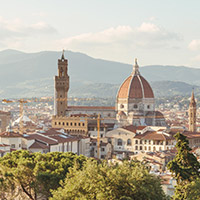 Florence & Tuscany
Florence & Tuscany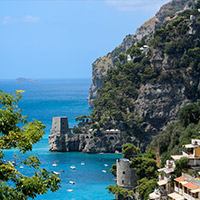 Napoli & Amalfi Coast
Napoli & Amalfi Coast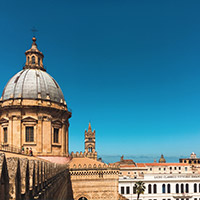 Sicily
Sicily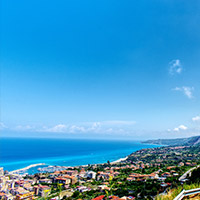 Calabria
Calabria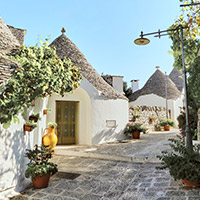 Matera & Puglia
Matera & Puglia